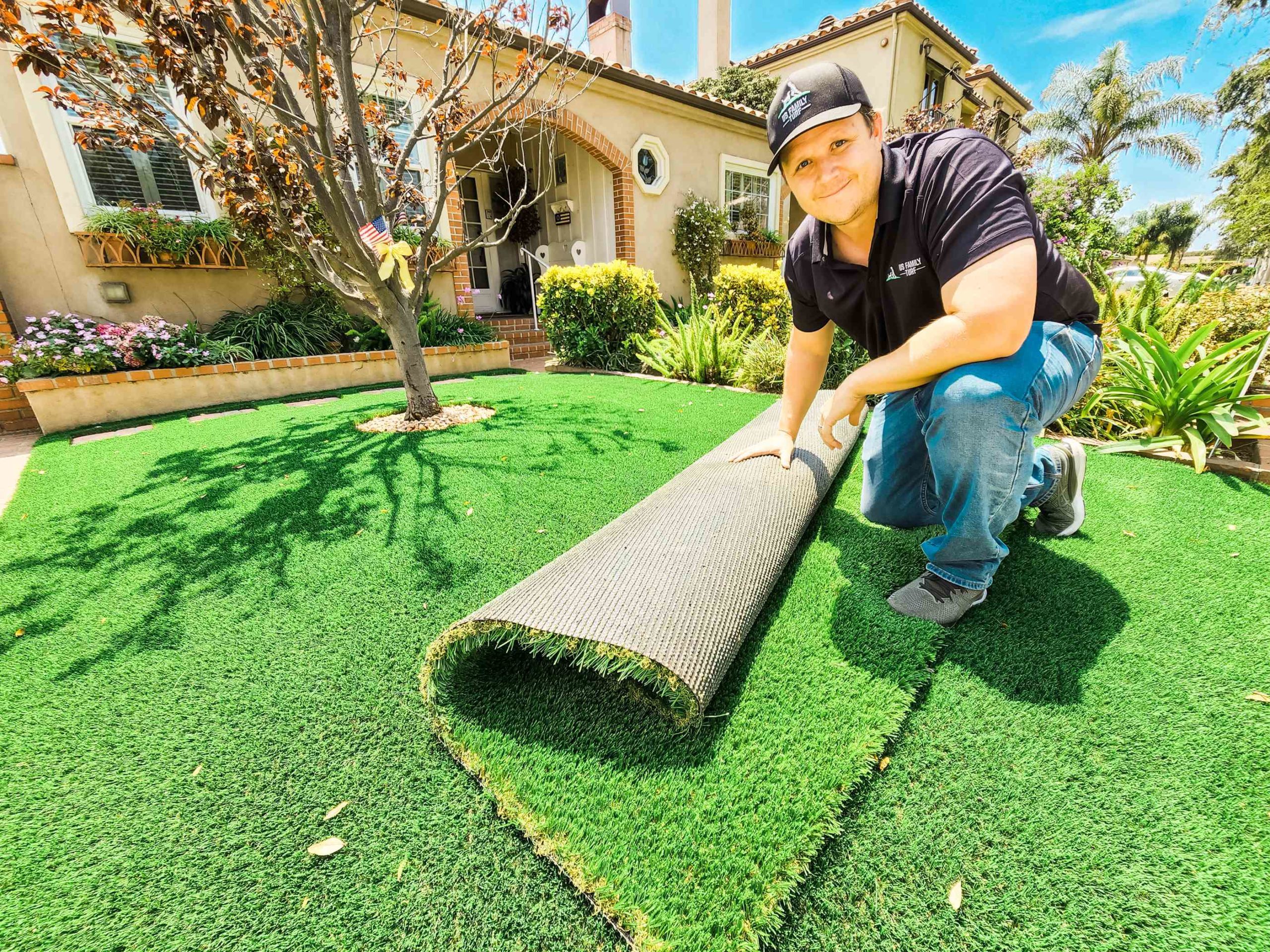Boost Your Landscape with Specialist Turf Installation Mesa AZ!
Boost Your Landscape with Specialist Turf Installation Mesa AZ!
Blog Article
Discover the Perks of Artificial Yard for Effortless Yard Care and Sustainability
With an emphasis on water preservation, marginal maintenance needs, and ecologically pleasant characteristics, synthetic grass uses an engaging alternative to standard lawn. What absolutely establishes artificial lawn apart in terms of simple and easy grass treatment and sustainability?

Water Conservation Perks
Fabricated grass uses considerable water preservation benefits, specifically in areas where water deficiency is a problem. In contrast, man-made yard eliminates the need for normal watering, saving an estimated 55 gallons of water per square foot each year.
Additionally, the preservation of water through artificial lawn prolongs beyond domestic applications. Parks, sporting activities fields, and industrial properties can likewise gain from the decreased water demands of synthetic turf. In regions influenced by dry spell or dealing with water restrictions, the setup of synthetic turf can play an essential function in guaranteeing outdoor areas remain green and useful while advertising responsible water usage practices.
Low Maintenance Needs
Given the significant water conservation advantages highlighted in the previous subtopic, it is obvious that man-made yard also masters needing minimal maintenance. Unlike all-natural turf, synthetic grass does not require watering, mowing, feeding, or pesticides to maintain its lavish look. This translates to considerable time and price savings for property owners and businesses alike.
Artificial turf is developed to endure differing climate problems, making it highly sturdy and durable. It does not require to be sprinkled routinely to remain eco-friendly, getting rid of the demand for watering systems and lowering water use. In addition, synthetic yard does not grow, so there is no need for mowing or edging, conserving both effort and time.
Moreover, synthetic lawn is reduced maintenance in regards to cleanliness. It does not draw in parasites like bugs or rats, lowering the demand for dangerous pesticides. Any debris that falls on artificial lawn can be conveniently removed with a leaf blower or a light rinse with water. On the whole, the very little upkeep requirements of synthetic lawn make it a useful and sustainable selection for landscape design needs.
Eco-Friendly Functions

Furthermore, fabricated grass is generally made from recycled products, better advertising eco-friendliness by decreasing waste and the demand for brand-new resources. This not only assists in waste decrease however likewise reduces the power consumption and carbon exhausts related to producing new turf materials. Synthetic turf does not require chemicals or plant foods, which can seep right into the dirt and rivers, causing harm to the setting. Overall, the environmentally friendly nature of fabricated yard lines up with sustainable practices, making it a feasible option for eco mindful people looking to decrease their ecological impact.
Enhanced Toughness and Durability
The durability and long life of man-made grass surpass conventional lawn artificial turf mesa az choices, making certain enduring quality and performance in various ecological problems. Unlike all-natural grass that needs regular maintenance such as mowing, watering, and fertilizing to remain healthy and balanced, synthetic turf maintains its lavish appearance year-round with marginal upkeep.
Additionally, artificial lawn is designed to resist pests, mold, and mold, more enhancing its longevity. The products used in manufacturing synthetic grass are commonly UV-stabilized to stop discoloration and destruction triggered by sunlight exposure, making visit this site certain that it stays dynamic and eco-friendly for several years to come. By spending in fabricated lawn, homeowner can take pleasure in a low-maintenance, resilient alternative to all-natural turf that enhances the visual allure of their exterior spaces.

Health and Safety Benefits
Unlike all-natural yard that calls for chemicals, herbicides, and plant foods for maintenance, artificial grass eliminates the need for these chemicals, decreasing the threat of direct exposure to damaging compounds for both human beings and pet dogs. Additionally, synthetic lawn gives an attire and degree surface that can assist avoid trips, slips, and drops, specifically in locations where all-natural yard might come to be irregular or create openings.
Furthermore, artificial turf does not bring in parasites like ticks and fleas, which are usual in natural turf lawns, minimizing the chances find more of insect attacks and problems. The lack of mud and pools on man-made lawn additionally decreases the threat of sliding and injuries throughout damp weather. In general, the health and wellness benefits of man-made grass add to a stress-free and secure outdoor environment for family members, pet dogs, and site visitors alike.
Verdict
To conclude, the benefits of artificial grass are apparent in its water preservation benefits, reduced maintenance requirements, green attributes, improved longevity, and wellness and safety advantages. Synthetic turf offers a lasting option for uncomplicated lawn treatment, making it a useful selection for house owners and companies seeking to minimize water use and environmental influence. artificial turf companies mesa. Its resilient properties give an economical and low-maintenance option to typical turf yards
Report this page